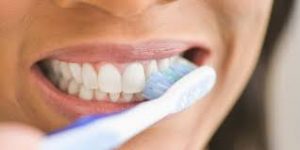Gum Disease and Cancer Risk in Women

A report was published this week in the journal Cancer Epidemiology, Biomarkers & Prevention that links gum disease with an increased risk of several types of cancer in postmenopausal women. Periodontal disease was tied to a 14 percent higher risk of developing any type of cancer, but the greatest risk was for esophageal cancer, which was more than three times more likely in older women who had gum disease than those who didn’t. In addition, gum disease was associated with a higher risk of lung cancer, gallbladder cancer, melanoma and breast cancer. women who smoked and had gum disease had a higher risk of breast, lung and gallbladder cancer. For those women who never smoked but had gum disease, other cancers, such as melanoma, carried higher risk.
The exact connection between gum disease and health issues is uncertain, but perhaps gum disease is a marker for overall health. More research is needed to really define the connection. While it’s possible that those with poor oral hygiene have poor diets, are overweight, lack exercise or drink in excess, all of which have been shown to increase the risk of cancer, eliminating gum disease with proper oral care could reduce your risk of some cancers.
You may have gum disease if you have:
- Gums that are red, sore, bleeding, or swollen, or that pull away from your teeth
- Loose teeth
- Chronic bad breath
- An irregular bite or dentures that don’t fit well
The American Dental Associations recommends a regimen of oral health to keep gum disease at bay.
- Brush your teeth twice a day with a soft-bristled brush. The size and shape of your brush should fit your mouth allowing you to reach all areas easily.
- Replace your toothbrush every three or four months, or sooner if the bristles are frayed.
- Make sure to use an ADA-accepted fluoride toothpaste.
- Clean between teeth daily with floss. Tooth decay-causing bacteria still linger between teeth where toothbrush bristles can’t reach. This helps remove plaque and food particles from between the teeth and under the gum line.
- Eat a balanced diet and limit between-meal snacks.
- Visit your dentist regularly for professional cleanings and oral exams.

















